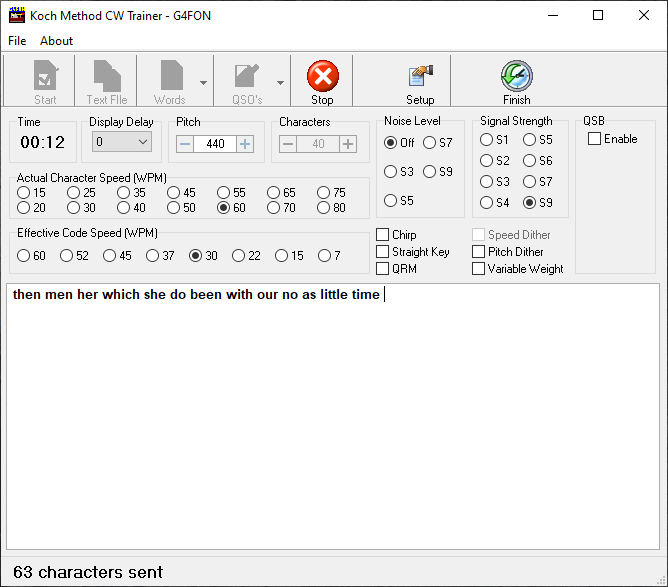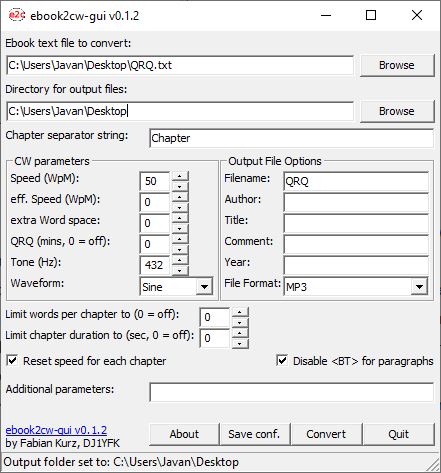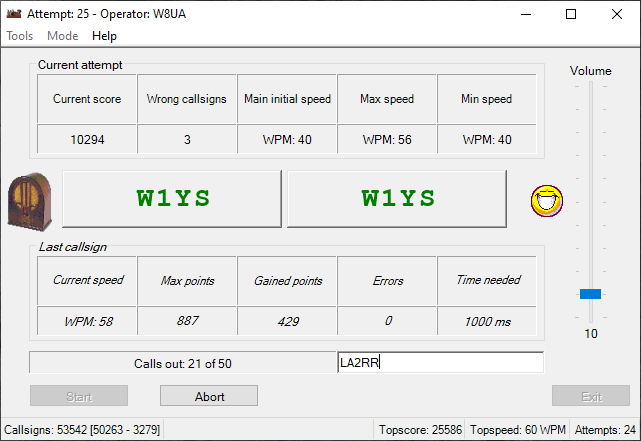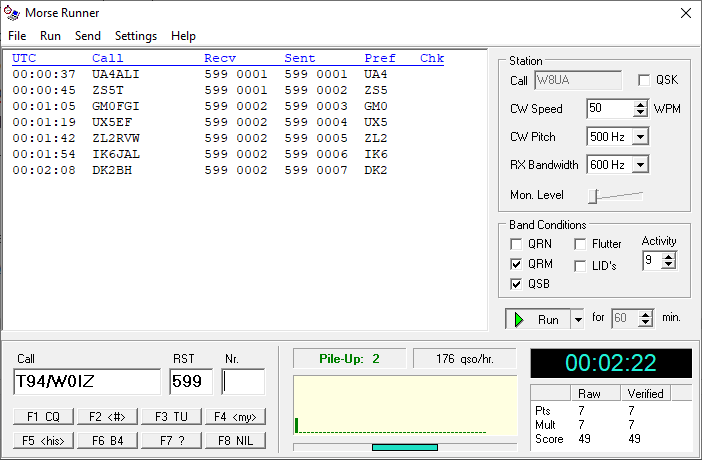Over the past year of my journey to becoming more proficient with CW, I have been asked quite often about the tools that I use to practice. I decided that it may be helpful to the community if I could compile a simple list of resources for others that are also improving their Morse code copying skills. All of the applications that I have used, with the exception of one, are designed for a CW operator that is at least able to copy all of the characters and numbers, so don’t download these applications with the intent of learning the Morse Code characters.1
This windows application is used by many individuals for learning the CW characters using a training protocol called the Koch Method, but I use this program for a different feature that it has. I like to initiate the program to send the “100 [Most] Common Words” or the “1000 [Most] Common Words” and let the program just spit out the Morse code. The app then displays the word just seconds after it was sent, so your Instant Word Recognition accuracy can be quickly checked. Since the actual character speed and the effective code speed do not have to be equal, I often set the program to send the words at a faster speed, then it follows the Farnsworth protocol by adding spacing between the words to slow down the series of words. Although I don’t use this program very often, I do find that the practice helps me to quickly recognize common words when I’m engaging in CW ragchews2.

Ebook2CW: Text to audio file converter
When I read about this app, I had no idea why I hadn’t found out about it earlier on CW resources lists. There isn’t a whole lot to the program; you simply upload a text file, and it generates an MP3 Morse code audio file within a number of seconds. While some people convert entire e-books to audio files, I usually just convert articles that I find online. After converting the file, I then upload the MP3 file to my phone for listening while away from home. Since I run four days a week, I have a lot of time on my hands to either listen to podcasts or articles that I convert to Morse code. In addition to this being great practice, I have actually found it to be quite entertaining to listen to technical articles while running. Of course, this tool can also be very helpful for individuals with a long commute to and from work each day.

RufzXP Callsign copying practice tool
This straightforward application is useful for practicing copying callsigns; it simply sends a callsign, and the user types it into the text box. When the callsign is incorrectly entered, the next callsign is sent 1 WPM slower, but when the callsign is correctly entered, the next callsign is sent 1 WPM faster. This process runs until the user has copied fifty distinct callsigns. Since the callsigns are always sent at the fastest speed that the user can copy, this tool can help an individual quickly increase their callsign copying skills.

Morse Runner contest simulator
This app is my favorite CW practice tool! This contest simulator does such a good job that when I get on the headphones and start a practice session, it feels like I just plopped down in the 40 meter run chair at K3LR during CQ WPX CW. The “radio” can be adjusted to have QRN, QRM, QSB, flutter, and even lids to simulate real band conditions. The pileup can also be modified, with adjustments from 1 to 9 stations on average responding to each CQ. I have lately been using it on two different PC’s simultaneously, which makes for great 2BSIQ3 practice. I can not say enough about this contest simulator; every CW contester should at least give it a try.

Note:
0QRQ is the Q-signal for “Send Faster”.
1CWops and Long Island CW Club both hold free online CW classes for individuals with no code experience.
2CW ragchews are casual conversations similar to those found on a local repeater.
32BSIQ is an acronym for Two Band Synchronously Interleaved QSO’s. This contesting mode defines a single operator running two pileups on two distinct bands simultaneously by interleaving segments of the QSO’s. Many 2BSIQ operators practice extensively with Morse Runner or other similar contest simulators.
